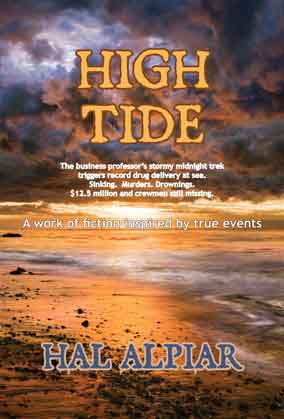STILL STANDING TALL . . . Delaware’s Ever-Vigilant, Historic Coastal Towers (A magazine article by Hal Alpiar)
Internet, text-messaging, and jet age activities swirl around them. Yet the pair of WWII “Eyes” for the guns of (Cape Henlopen State Park’s) Fort Miles, remain fixed. They are focused, steadfast, and unblinking forever-on-the-alert sentries at the edge of the sea, anchored in the First State’s sands of time.
 Sideways shoreline glances of unaware Coastal Highway travelers often size them up as old sugar mills, grain silos, or incinerators. But the two concrete towers that stand a stone’s throw south of Dewey Beach are actually U.S. Army observation towers that have been abandoned since the early 1960’s. They were designed to help protect America’s shores, and Delaware Bay, from WWII enemy warships.
Sideways shoreline glances of unaware Coastal Highway travelers often size them up as old sugar mills, grain silos, or incinerators. But the two concrete towers that stand a stone’s throw south of Dewey Beach are actually U.S. Army observation towers that have been abandoned since the early 1960’s. They were designed to help protect America’s shores, and Delaware Bay, from WWII enemy warships.
The structures (“Tower #4” closest to Dewey and “Tower #3” about a hundred yards farther south) were designed to last just twenty years, but military engineering skills have clearly outstripped architectural skeptics. The towers are two of eleven that are still standing strong between Fenwick Island and Cape Henlopen–and headed for their 66th birthday! Weather forces took the life of a twelfth, Cape May, NJ, tower.
The continuous-flow concrete structures each boast foot-thick walls strengthened and held together with wire mesh and steel reinforcing bar supports. Each foundation consists of fourteen creosote-coated pilings hammered into the sand with a concrete base laid on top.
The 64-foot tall, 16-foot wide towers originally sported windows, wooden floors, and a coal stove or 440-volt electric heater for the comfort of the eight soldiers who worked 8-12 hour shifts in two teams of four on the upper observation post floors of the duty station. Their only access was a ladder that went straight up six stories through the middle of the tower; the last man in pulled the ladder up after him.
 The horizontal observation slits that mark each tower provide a 270° view of the ocean and surrounding beach areas. The towers were built for the purpose of sighting and reporting the location of enemy ships. The azimuth sighting range finder was most commonly used for locating and observing targets. With these concrete column-mounted specialized scopes, positioned to see through the observation slit openings, an “observer” and a “reader” worked in tandem to record the “azimuth” of a target.
The horizontal observation slits that mark each tower provide a 270° view of the ocean and surrounding beach areas. The towers were built for the purpose of sighting and reporting the location of enemy ships. The azimuth sighting range finder was most commonly used for locating and observing targets. With these concrete column-mounted specialized scopes, positioned to see through the observation slit openings, an “observer” and a “reader” worked in tandem to record the “azimuth” of a target.
Once a ship was sighted, sightline readings were reported every 30 seconds and incorporated into a simple math triangulation method. The plotting of coordinate sightlines from the two different towers created a point of intersection at the tip or apex of a triangle out at sea. This information would be telephone-relayed to the battery commander (in charge of artillery fire) allowing for the land-based guns to be targeted with maximum accuracy. Also with maximum accuracy, you can help restore this historic guardian of the coast. See the details below.
___________________________________________________



Hal – Your blog is beautiful and the text could be in a travel magazine.
I wish you the best of luck with it and with your new book.
All the best, Fran
[Francine Silverman is the author of CATSKILLS ALIVE and LONG ISLAND ALIVE travel guidebooks (Hunter Publishing)]
Hal, Wow! I am impressed with your Blog. I know you will be famously successful!
Jim Haines
Great article! I would love to see more like it — interesting often overlooked subject matter you dig into it, the way a musician composes a song.
Hal,
Great article — love the first paragraph! The whole article flows well and answers so many of the questions I’ve had about the towers and how the sightings were made and triangulated.
You have a wonderful talent!
Ken